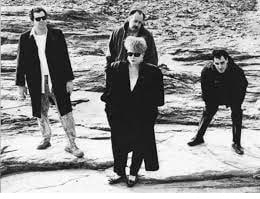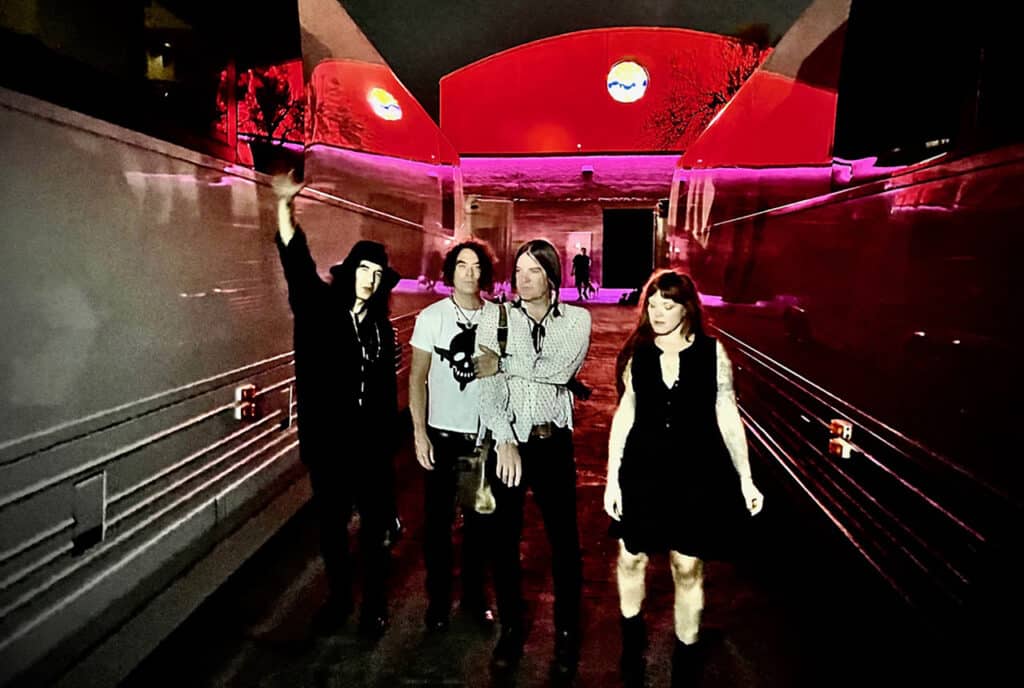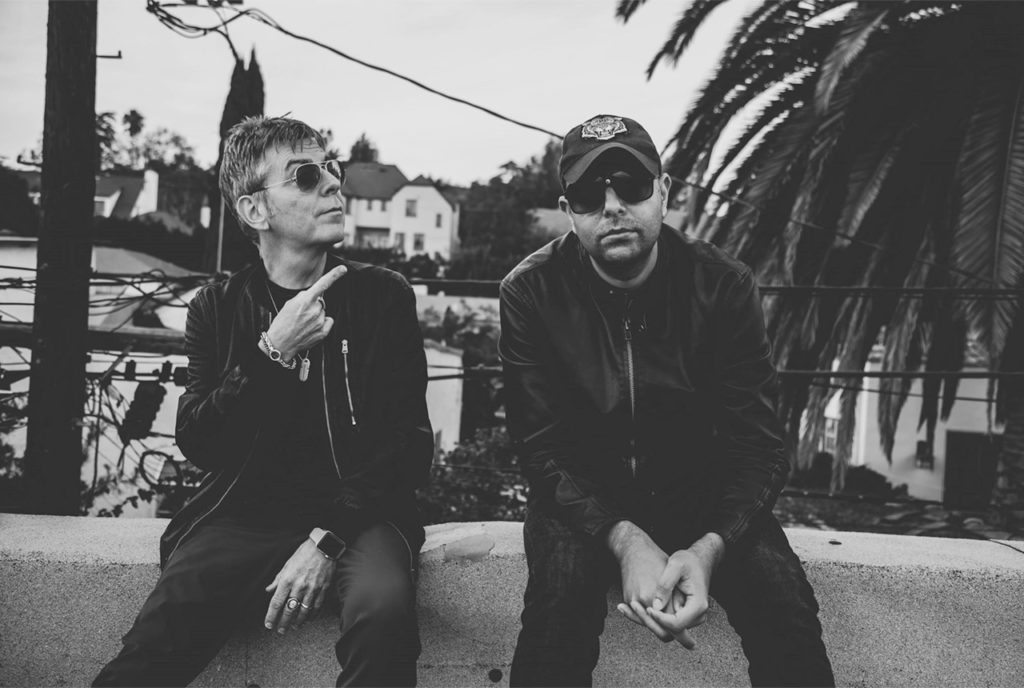It’s been a long wait for new music from Johanna’s House of Glamour, but their new CD, “The Dark Flower” does not disappoint. The disc is every bit as good as 1995’s “Style Monsters” and is something that any fan of dark, atmospheric pop music will want to check out. Having experienced record company-related set-backs, Johanna’s House of Glamour decided to start their own label, rbm records, to release the disc. In an email interview, band members Bruce, Dan, and Laura discussed the new venture, the cd, and other topics.
Is RBM your own label? If so, what made you decide to start it, and what have you found the pros & cons to be of running your own label?
Bruce:Yes, rbm is our own label, actually a label put together by Bruce. If you go to the website www.rbmrecords.com, you’ll see a nice discography of Johanna’s House of Glamour, as well as the other releases on the label. Right now its purely home-grown stuff, but who knows what the future will bring? The label started as a means to release ‘the dark flower’. Make no mistake, as official as it all looks, the persona and artwork of the cds on the label is purely the result of too much free time and a bunch of tinkering with PhotoShop. I’d like to think though that the 25+ years of staring at thousands of album covers in various stages of mental coherence is finally paying off!. Its pretty easy to pull this all together, much harder to get descent material to release and get it distributed. Its incredibly expensive to do any sort of distribution on any sort of scale that would pay back, so your stuck just doing it by hand. There is of course the internet route, which is quickly replacing the traditional methods. The problem with this is that there is such a glut of bands out there, and very little quality control. We have put our cd on www.cdbaby.com, its doing pretty well, but is lost in a sea of similar bands of wildly varying quality. Just do a key-word search on ‘Cocteau’ and see what happens. To be honest, if we sold one copy of ‘the dark flower’, we would consider the label a success, and we are happy to report that we have met our sales figures for the first quarter of 03 … After starting the label, I simply catalogued all my older releases of cassettes and whatnot as deleted, to upset anyone trying to start a collection. These will hopefully remain in obscurity, with the exception of rbm 005 ‘Fortunate Homestar 200’, which is a compilation of those old cassettes.
Dan:After waiting an insurmountable amount of time for the various labels that we’ve dealt with on the subject of releasing our music in a semi-timely fashion, it became obvious that even these “indie” labels don’t care much about the development of a band. The pros of a self-release: you can choose your distributors randomly and use the ones that relate to your targeted audience. In the UK, the new CD is available through Opal, Chunky, Norman, 555 and Rough Trade Shops. The cons: a lot of “road work” getting it to radio in the US and UK though we have completed most of our somewhat extensive mailing list. Laura: You know….when you record material and it’s released long after the band’s particular momentum and fascination with it has somewhat dimmed (although it never really completely dims)…..in other words, you’re constantly trying to move forward. Constantly striving to be better than yourselves almost, so that songs become like the road map and you listen and realize what needs to be better….so that ‘next time” will be an advancement…..up “the rungs of a ladder” as it were.
In your bio, you mention Instinct wanting to re-mix your stuff was ‘hip break beats and what not’ … was any of that actually done? If so, how did you feel about the results?
Bruce: The only mix we ever heard was the mix by Jazz con Bazz of ‘Blind Man’s Bluff’ which appeared on shadow records sdw026 ‘Earthrise.Shadow.3’. I found that mix to be scattered and incomplete, although parts of it were exciting. I think our stuff must be very hard to handle on a re-mix due to the organic rubber-bandy nature of some of the tracks.
Dan: We first came into contact with Gerald Helm of Instinct when he was working for Rough Trade Records. After C’est la Mort basically folded, Gerald gave us a call and wanted to hear recent material. I think they had ideas for us that weren’t necessarily consistent with what we do. One mix, “Blind Man’s Bluff” was re-mixed in Germany by Jazz con Bazz and released on Shadow Records under the band name “Spectral Assignment.”
Laura: I have to say that I was completely amazed/dismayed when I first heard that mix….there were no vocals!!! Plus some of the key elements of the song seemed to be removed such as primary keyboard and bass parts…it was odd but after awhile you kind of got used to it. This would also relate to the above “pros and cons” question on why it’s great to have the ability to self-release your stuff.
Would you consider signing to a label again?
Bruce: Yup. When you get signed to a ‘real’ label, they usually are hooked up enough to get your cds into all sorts of distribution networks. You might not make a lot of money, but at least your cd would end up in hundreds of mom-and-pop indie record stores all over the country. Its frustrating … once the cd ends up in the proper places, people are thrilled to get it, but are you really going to fill out 500 mailing labels, package them and mail them off for $1.25 apeice? No … Having the dark flower picked up by a bigger label would be cool, but I’d make sure the packaging was slightly different, so that the original stocks of rbm records would immediately become valuable as a collector’s item …
Dan: Yes, of course…that goes without saying…however, it would have to be under the right circumstances. We played as guests on the Brit band’s “Boyracer” album it was on the now defunct Zero Hour record label which was one of those sort of small “development” labels run by the major label MCA/Universal. After the smoke had cleared and with big dollar backing, it quickly became Boyracer’s worst selling record ever. They now have their own label and have a strong following in the UK and US. It’s all about hitting your target audience. I’m sure you get the drift….
Laura: And that makes it absolutely unanimous!! Of course we’d love to be picked up by a bigger label (laughs) we’d release the Johanna version of “Laughing Stock” by “Talk Talk” and then no doubt get dumped very quickly!!! Although there are exceptions to that rule as well….i.e., the new Radiohead release “Hail to the Thief” on Capitol Records. They’re doing what “Talk Talk” did and somehow have enough of a fan base to play the music they really want to play and making a decent living doing it I’d say.
What effect did the long gap between releases have on how “The Dark Flower” turned out?
Bruce: The long gap between Style Monsters and The Dark Flower definitely had an effect. The Dark Flower was more or less ready to go in 1998. In the intervening time the tracks migrated from analog (Tascam 38 reels) to ADAT, and then onto a computer with MOTU’s Digital Performer. Not that that makes any difference, but once on the computer, we were free to re-mix all the material. All of the track fading, mutes, and effects could be automated easily, and as well the mixes passed though some nice program leveling amp simulations. It sounds much fuller now, especially how the tracks fade into each other. Its interesting going back and mixing 5 year old material. All the stuff that bugged you, obsessed you, and forced your mind into a small corner is gone, and you get a clean idea of what the song wants to sound like. In general most of these mixes have some freaky radio-noise-distortion-microphone-distress-at-a-distance sortof stuff mixed quite strong into the program. Some of these tracks were absent in the original mixes.
Dan: After stepping away from most of those mixes for quite some time, I always knew these songs deserved to be heard….I felt that they were still relevant songs and actually could sometimes more optimistically listen to them. Bruce is an excellent producer and sound engineer and did a great job of merging and editing the songs.
Laura: I felt the same way as both Bruce and Dan…..there was an effect because of the gap but I also was able to listen to them with a more open ear and head because of the fact that I had sort of stepped away from them for awhile. You know, when you’re too close to the song after having just recorded it, you’re more apt to be critical of your own stuff. But yeah, they’re still totally relevant…
What made you decide to start using the MOTU DP3 system? Have you just used it for re-mixing so far, or have you recorded tracks on it? Are there things about computer-based digital that you think are particularly helpful with your style of music and/or creative process? Any disadvantages?
Bruce: I resisted jumping onto the computer music train for a long time. Now I’ll never ? go back. As long as you’ve got your act together with miking and gain staging, etc, the computer sounds just fine. What is really killer is the editing flexibility. I get braver and braver about cut-n-paste editing of audio, and it never lets me down. JHG has not used this system for recording yet, but we have been passing tracks back and forth for some time. The computer stuff makes this all possible.
Dan: Using a computer for editing and gaining more of an ability to “insert” sound is a good thing…..also the relative ease of being able to burn your stuff to CD right away. When Johanna’s House creates new music I can almost guarantee that there’ll be a much larger use of electronics in all elements of the music.
Laura: Yes, the marvels of computers!!! And to think we once were recording on cassette tapes and then on to reel to reel……..wow that was moving up (laughing)….
Do you have any touring plans?
Bruce: No plans right now, but you never know.
Dan: Yeah (laughs) as soon as we get signed by a major!!
Laura:Nods in concurrence…..










